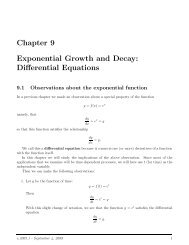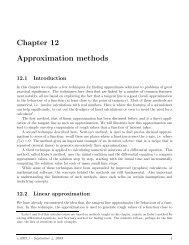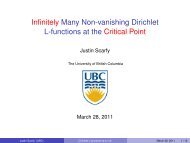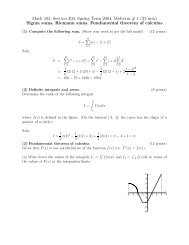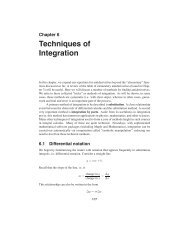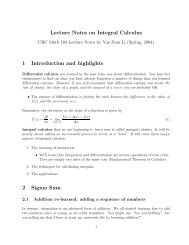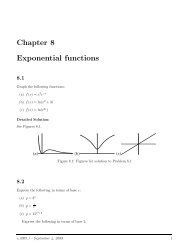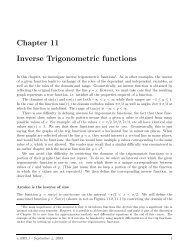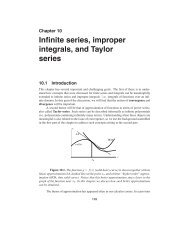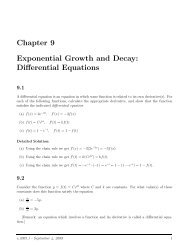Chapter 10 Continuous probability distributions - Ugrad.math.ubc.ca
Chapter 10 Continuous probability distributions - Ugrad.math.ubc.ca
Chapter 10 Continuous probability distributions - Ugrad.math.ubc.ca
- No tags were found...
Create successful ePaper yourself
Turn your PDF publications into a flip-book with our unique Google optimized e-Paper software.
Math <strong>10</strong>3 Notes <strong>Chapter</strong> <strong>10</strong>(Re<strong>ca</strong>ll the definition of the derivative - the limit of the slope of the se<strong>ca</strong>nt line as the widthincrements ∆x approach 0.)Thusp(80) ≈F(80) − F(75)5= 0.115= 0.022 per year<strong>10</strong>.5.3 Example: Raindrop size distributionDuring a Vancouver rainstorm, the density function which describes the radii of raindrops is constantover the range 0 ≤ r ≤ 4 (where r is measured in mm) and zero for larger r.(a) What is the density function p(r)?(b) What is the cumulative distribution F(r)?(c) In terms of the volume, what is the cumulative distribution F(V )?(d) In terms of the volume, what is the density function p(V )?(e) What is the average volume of a raindrop?SolutionThis problem is challenging be<strong>ca</strong>use one may be tempted to think that the uniform distribution ofdrop radii should give a uniform distribution of drop volumes. This is not the <strong>ca</strong>se, as the followingargument shows! The sequence of steps is illustrated in Figure <strong>10</strong>.4.p(r)F(r)r4 4rp(V)F(V)VVFigure <strong>10</strong>.4: Probability densities for raindrop radius and raindrop volume (left panels) and for thecumulative <strong>distributions</strong> (right) of each.v.2005.1 - January 5, 2009 13



